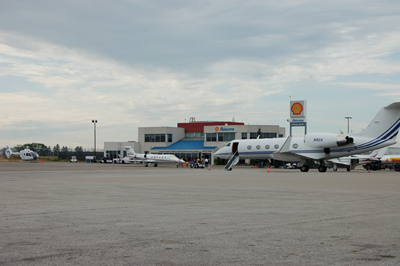
Features
Operations
Waypoint: Not cleared to land…
We thought that bizav had established a good foothold at Canada’s largest and busiest airport. Then a surprise hit from the Greater Toronto Airports Authority (GTAA)
January 18, 2010 By Rob Seaman
We thought that bizav had established a good foothold at Canada’s largest and busiest airport. Then a surprise hit from the Greater Toronto Airports Authority (GTAA) sent everyone into a spin. With little warning, effective Nov. 1, 2009, corporate aviation was told that it would only be welcome during certain hours at YYZ. The GTAA made the announcement that during the airport’s restricted hours of operation – 12:30 a.m. to 6 a.m. – “slots” would not be allocated to general aviation.
 |
|
This is a throwback to years past when the GTAA reduced “slots” for bizjets in favour of the commercial sector. With education and communication, things settled into a good relationship with each side working to the needs of the other. Then, a sudden change!
With the lack of notice, more than one operator was caught off guard. In fact, some were actually mid-flight and unaware that they were not allowed to land at their planned destination (for some, their home base). Flights were diverted to Hamilton; passengers and operators faced late-night chaos; ground transport, FBO service and customs all became challenges. The business jet rationale simply died.
Calls ensued to the national and regional chapters of the CBAA. For its part, the national office admitted that it had in fact, missed meetings with the GTAA at which this change was discussed. The CBAA only received official notice a short time before the implementation date, with little opportunity for discussion or modification.
As many have pointed out, those who use bizav on a regular basis are not without influence. They are leaders within Canada and statistically these same individuals and firms are the highest volume purchasers of commercial airline tickets too. This group embraces aircraft travel at all levels.
GTAA said this was business related and that the limited number of late slots must be saved for commercial and cargo ops (who happen to pay a lot more in landing fees). Some suggested a political agenda was afoot. Regardless, that one segment of the aviation community should be refused equal access with others, when it operates within or better than the required standards, is reprehensible.
The original intent of late-night restrictions relates back to aircraft noise as a significant factor to the surrounding community. Such is not the case with modern aircraft and corporate jets. Most meet or exceed the current requirements. In fact, a couple of years ago, the GTAA invited corporate operators to participate with them in the early turnout trial on certain runways. Why? Because modern bizjets had a positive impact on the study. As for late-night restrictions, more landings relates to more money, and money, in the end, is what the airport needs. So with noise rules met, why have restricted hours? Keep ’em flying and make it all work!
The technologies used to mitigate community complaints can pinpoint a specific aircraft coming and going from the airfield. By and large, corporate aviation is usually innocent. And in the big picture, bizav may at most account for just five to seven late-night slots at YYZ.
While the CBAA was caught off guard on this, its management/executives certainly jumped to action. Together, the GTAA, a working group of operators and the CBAA crafted a compromise, and an equitable resolution was found. It allows resident or tenant aircraft access during restricted hours. Crisis over – for now.
One thing illustrated here is that the relationship between the CBAA, the bizav community and the airports needs constant attention. This issue shows the antiquated thinking that prevails in some aspects of aviation management and rulemaking. The need for new regulations, plans and policies for airports and aircraft across Canada – and, in fact, around the world – is clear. Domestically, this has been the ongoing subject of conversation by both the COPA and the CBAA for many years. What is more apparent with each year is that something has to change. Similar issues have popped up in the European Union and throughout the United States. What is clear is that the majority of “Joe Q Public” still does not understand the role of corporate aviation – nor, for that matter, does it care to. And that puts pressure on airports and their operators, who also may not see the value and make decisions that lack clarity and equality. The advocacy role of groups like the CBAA, the COPA, the IBAC, the NBAA and others is of ongoing importance and relevance. To sum it up, we’re all in this together, and together we have strength to make change and keep things working in our best interest – and we cannot let our guard down for one moment.
Rob Seaman is a Wings writer and columnist.